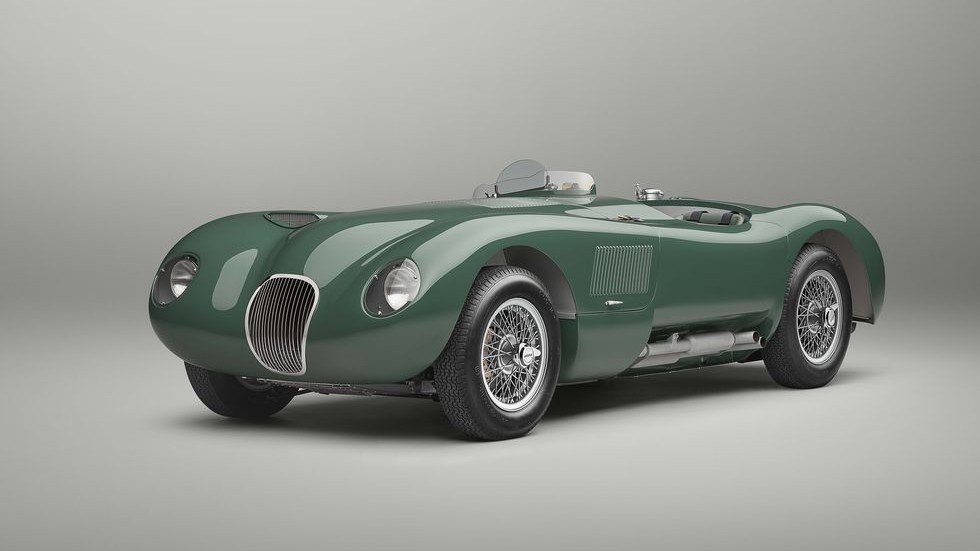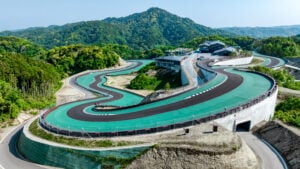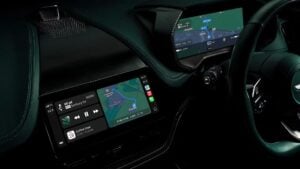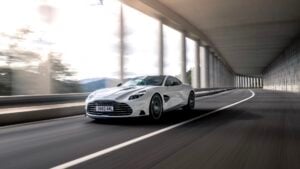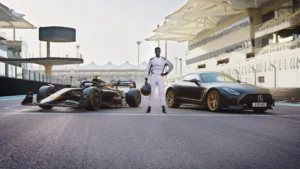In honour of its 70th anniversary, Jaguar‘s latest model is a reconstruction of their iconic C-type. The British automaker’s Classic division have announced their intentions to bring back the historic Le Mans-winning Jaguar C-type of the 1950s that smashed the 100 mph average speed record during the gruelling 24-hour race in 1953.
This is Jaguar’s fourth Continuation model after the Lightweight E-type, XKSS, and D-type, the new C-type will be unveiled to the public at the prestigious Concours of Elegance at Hampton Court Palace in London on September 3. Back in January, it was originally announced that only 8 examples of the limited-edition collectible would leave the doors of Jaguar Classic’s headquarters near Warwick in the UK; since then, that number has been revised to be “no more than 16”.

The Continuation models have been faithfully recreated with remarkable attention to detail. The open-top two-seater is set on gleaming, chrome wire wheels, with the Lucas fuse-box cover and the unusual brackets on the brake-fluid reservoir of the original racecar.
RELATED: Kerry Packer’s 1977 Jaguar XJS Up For Auction With No Reserve
Exhaustive research was conducted into the illustrious history of the Jaguar C-type, with each car being hand-built from original drawings and their construction coming from a combination of period techniques as well as 3-D CAD design. Jaguar’s original sales ledger of more than 2,000 parts was consulted to ensure the authenticity of the continuation.
Each C-type Continuation you encounter will be fitted with a 220 hp, 3.4-liter straight-six engine, equipped with triple Webber carburettors. Like their 1953 counterparts, the Continuation has six spare spark plugs screwed into a plate next to the driver’s seat, a spare ignition coil clipped to the chassis rail next to the main one, and an extra non-functional bracket on the brake fluid reservoir.
“This car is one of the most iconic in Jaguar’s racing history, driven by some of the most admired drivers, including Sir Stirling Moss,” mentions Dan Pink, director of Jaguar Classic. “The C-type is particularly notable for the first use of disc brakes—early versions of what we use in modern cars today. Developed with Dunlop, they helped contribute to the C-type’s domination on the track.”

The car is a svelte, sculpted beauty that would grace any collection. Its fluid and aerodynamic shape is one of the most important vehicles in the marque’s history and was originally imagined by designer Malcolm Sayer, who was recruited by then-Jaguar boss Sir William Lyons. It was this pioneering, slippery profile that helped drivers Peter Walker and Peter Whitehead win the 1951 Le Mans race averaging 93 mph upon the car’s debut. Two years later, revised versions of the Jaguar C-type placed first, second and fourth in the race.
Of the 53 C-types built in the 1950s, 43 were sold to customers and, importantly, were fitted with less powerful drum brakes. The Continuations, though, are equipped with upgraded disc brakes, an electric cooling fan for its radiator, a smaller steering wheel than the 1953 Le Mans-winning racer.
In fact, the modern iterations of the car reflect the past several decades of car manufacturing in more ways than one (for one, the original predates the invention of seatbelts). The car zero prototype of the C-type was, by all accounts, a thrown-together endurance racer designed to compete, then fall to pieces as it crossed the line. Made from thin-gauge metal, painted with brushes, and with minimal consideration given to details like panel gaps, there is little-to-no doubt that the new car triumphs over the old.

This, however, can be put to the test as all cars are sold with FIA homologation to allow them to compete in various series that allow modern replicas to compete against storied originals. This includes the Jaguar Classic Challenge, which features rounds at Le Mans, Spa-Francorchamps, and Silverstone.
Any prospective owners can build their own version of the classic, using the car configurator function of the Jaguar site. The configurator offers a choice of twelve water-based paint colours, eight leather interiors, and a variety of period options for your vehicle which will ultimately set you back an undisclosed seven-figure price. Despite this, all of Jaguar Classic’s previous continuation models have sold out.



